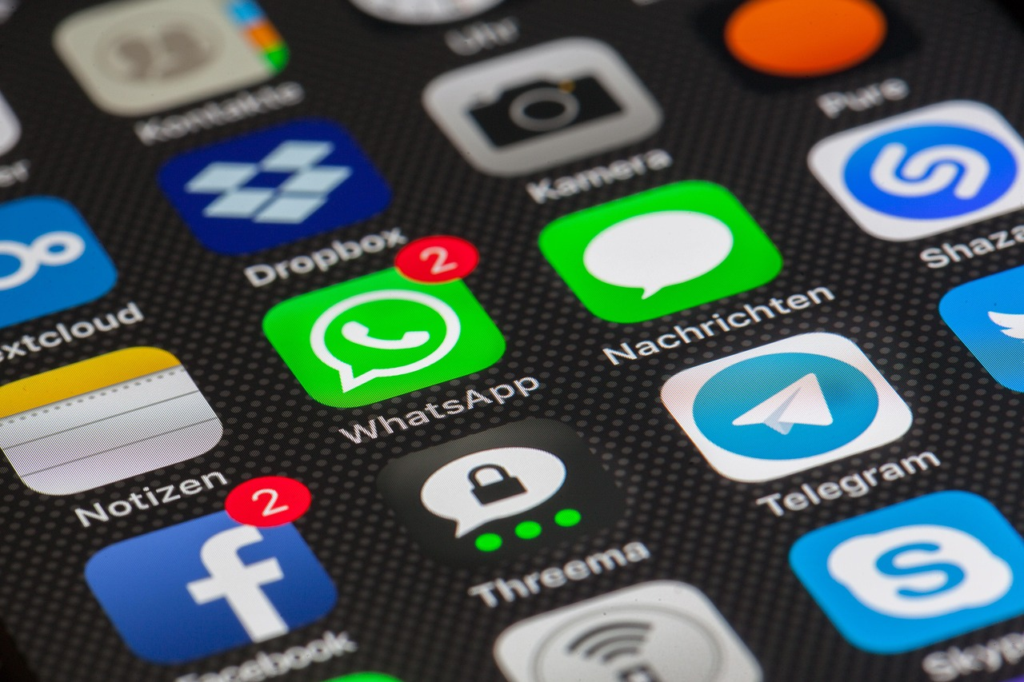
Texting customers isn’t new, but choosing the right messaging platform can make or break your restaurant marketing. Many businesses rely on WhatsApp broadcasts or manual messages—but here’s the catch: if customers haven’t saved your number, they won’t receive your broadcast. Meanwhile, SMS guarantees delivery but lacks the interactive elements that drive deeper engagement.
So, which one works better for restaurants? SMS marketing remains a powerful tool for time-sensitive promotions, reservation confirmations, and loyalty program updates. You may be wondering, does sms marketing still work for restaurants in 2025? Absolutely! With a 98% open rate and 90% of recipients reading messages within 3 minutes, it’s one of the most effective ways to instantly connect with customers.
WhatsApp marketing, on the other hand, creates a more engaging experience. With 3.2 billion active users in 2025, it supports rich media like images, videos, and automated replies. Plus, 57.82% of WhatsApp messages receive a response within a minute, making it ideal for interactive customer communication.
The right choice could either leave your promos unseen or boost visibility so much that your redemption rates double. Let’s dive in!
WhatsApp vs SMS Marketing: Comparing Key Features
Choosing the right messaging tool is key to restaurant success. Let’s compare WhatsApp vs. SMS marketing to find the best fit for your business!
| Feature | WhatsApp Marketing | SMS Marketing |
| Accessibility | Requires an internet connection | Works with any phone that has a SIM card |
| Message Format | Rich media support (images, videos, emojis) | Text-only |
| Character Limit | 1024 characters per message | 160 characters per message |
| Interactivity | Allows two-way communication | One-way communication |
| Read Receipts | ✅ Yes, you can see when messages are read | ❌ No, you can’t track if messages are read, only opened and clicked. |
| Delivery Status | ✅ Trackable with read receipts | ❌ Dependent on carrier network |
| Business Profile | ✅ Can create a verified business profile | ❌ No business profile feature |
| Open Rate | 98% | 98% |
| Click Rate | 45-60% | 20-35% |
| Cost | Higher cost, varies by country | Lower cost per message |
| Best Used For | Exclusive promotions, VIP deals, customer engagement | Mass messaging, time-sensitive alerts, one-time codes |
WhatsApp vs SMS Marketing for Restaurants
WhatsApp and SMS each play a unique role in restaurant marketing, with their pros and cons. Let’s break them down further:
SMS Marketing: Purpose, Pros & Cons
Purpose of SMS Marketing
SMS marketing is best for quick, time-sensitive communication with customers. It’s ideal for:
- Mass Promotions: Flash deals, limited-time discounts, and exclusive offers.
- Urgent Updates: Reservation confirmations, waitlist notifications, and event reminders.
- Loyalty Program Engagement: Reward codes, points balance updates, and special incentives.
Pros of SMS Marketing
✅ Universal Reach: Works on any mobile phone, no internet or app required, making it accessible to all diners, including those without smartphones.
✅ Fast & Direct: Short, attention-grabbing messages ensure quick action, perfect for last-minute deals or event invites.
✅ Reliable for Urgent Alerts: Unlike WhatsApp, SMS messages don’t get buried in chat threads, making them ideal for reservation confirmations and promo codes.
✅ Cost-Effective for Bulk Messaging: More affordable than WhatsApp for sending mass promotions and re-engagement campaigns.
✅ Great for Loyalty & Rewards: Widely used for reward redemptions and secure authentication, making loyalty programs more seamless.
Cons of SMS Marketing
❌ One-Way Communication: Primarily used for broadcast messages, lacking real-time customer interaction.
❌ Character Limits & Limited Information Delivery: With a 160-character limit, SMS restricts how much information you can convey. This makes it challenging to provide detailed promotions and instructions.
❌ Opt-In Requirements: SMS marketing requires explicit customer consent, which can take time to manage. Restaurants must ensure compliance with data privacy laws and maintain an updated opt-in list.
❌ Potential for Spam Perception: If messages are poorly targeted or sent too frequently, customers may see them as spam. This can lead to opt-outs, reduced engagement, and a negative brand perception.
WhatsApp Marketing: Purpose, Pros & Cons
Purpose of WhatsApp Marketing
WhatsApp marketing is best for engaging and retaining customers through interactive, personalized communication. It’s ideal for:
- Loyalty & VIP Engagement: Reward repeat customers with exclusive deals, birthday perks, and personalized promotions.
- Rich Media Promotions: Share menus, videos, images, and interactive buttons to enhance customer experience.
- Brand Credibility & Trust: A verified business profile helps establish authenticity and strengthens customer relationships.
Pros of WhatsApp Marketing
✅ Multimedia Messaging: Send images, menus, videos, voice notes, and interactive messages, creating a more engaging experience.
✅ Higher Open & Click Rates: WhatsApp boasts a 98% open rate and 45-60% click-through rate, making it a stronger marketing tool than SMS.
✅ Business Profile & Verification: Restaurants can set up a verified WhatsApp Business Profile, increasing brand credibility.
✅ End-to-End Encryption: Messages are secure and private, making WhatsApp a trusted channel for customer interactions.
Cons of WhatsApp Marketing
❌ Requires Internet & App Download: Customers must have WhatsApp installed, making reach slightly limited compared to SMS.
❌ More Expensive in Most Countries: WhatsApp costs more than SMS in most countries, making it less ideal for mass promotions.
❌ Limited Two-Way Communication – WhatsApp Business accounts using bulk messaging act like a one-way SMS shortcode. While you can send messages, customer replies won’t be visible unless you’re using a separate chat management platform.
❌ Chats Can Get Buried: Unlike SMS, WhatsApp conversations can get lost in multiple chat threads, reducing visibility.
❌ Message Limits & Approval Process – Business-initiated messages are restricted within a 24-hour period, and certain message templates require pre-approval by WhatsApp.
❌ Quality Rating & Block Risks – Customers can block businesses or mark messages as spam, impacting your ability to send messages.
❌ Limited Integrations Without API – WhatsApp doesn’t seamlessly integrate with marketing tools unless businesses invest in the WhatsApp Business API.
❌ No Multiple Users (Without API) – If multiple staff members need to manage customer chats, you’ll need the API version instead of the standard WhatsApp Business app.
❌ No Group Messaging for Broadcasts – WhatsApp broadcast messages only reach customers who have saved your number, limiting broader outreach.
WhatsApp vs SMS Marketing: How to Choose the Best Messaging Channel for Your Restaurant
Choosing between WhatsApp and SMS for restaurant marketing depends on your business goals and customer preferences. Do you want to build loyalty with interactive experiences or reach more customers with direct promotions? The right choice also depends on the region you operate in—messaging trends vary across different markets.
For example:
- Southeast Asia – WhatsApp dominates in Malaysia, Indonesia, and Singapore, while LINE is the preferred platform in Taiwan and Thailand. However, WhatsApp is still commonly used in Thailand for formal business communication.
- United States – SMS is the primary choice for business messaging, as WhatsApp adoption is very low.
- South Korea – KakaoTalk is the most widely used messaging platform, making it a better option than WhatsApp.
Understanding the geographical context and preferred messaging apps in your market is key to ensuring your marketing efforts reach the right audience. Now, let’s explore the key goals to consider when choosing between WhatsApp and SMS for your restaurant!
Need to Build Stronger Customer Relationships? Use WhatsApp
For exclusive VIP experiences, repeat customer engagement, and personalized marketing, WhatsApp is the best choice. Its rich media features (images, videos, voice notes) and two-way messaging make it ideal for fostering direct relationships with customers. Unlike SMS, WhatsApp lets you send interactive messages, automate responses, and build an engaging loyalty program that keeps customers coming back.
How Restaurants Use WhatsApp for Engagement
- VIP Loyalty Programs – Offer exclusive deals, early access to promotions, or birthday surprises for high-spending customers.
- Reservations & Customer Service – Let customers book a table, confirm reservations, or make inquiries directly via chat.
- Personalized Promotions – Send targeted offers based on customer preferences (e.g., “Hey Jennifer, enjoy 20% off your favorite pasta this weekend!”).
- Interactive Menus & Order Updates – Share digital menus, take pre-orders, and update customers on their delivery status.
✅ Best for: Personalized promotions, VIP offers, loyalty programs, interactive engagement.
❌ Consider this: Requires an internet connection, higher costs in some regions, and message limits within a 24-hour period.
Want to Reach as Many Customers as Possible? Use SMS
For mass promotions, time-sensitive alerts, and reaching all customers (even those without WhatsApp), SMS is the way to go. It’s universal, doesn’t require an internet connection, and guarantees delivery—making it perfect for reaching a broad audience quickly. SMS is also more affordable for bulk messaging, making it a cost-effective way to attract new customers and re-engage past ones.
How Restaurants Use SMS For Mass Reach
- Flash Sales & Time-Sensitive Offers – Send short, compelling messages to drive traffic during slow hours (e.g., “Today only! 50% off desserts from 3-5 PM”).
- Reservation Confirmations & Waitlist Updates – Automatically notify customers about their bookings or table availability.
- Loyalty Program Updates & Reward Reminders – Inform customers of their points balance, expiring rewards, or upcoming perks.
- Event Announcements & Exclusive Invites – Promote new menu launches, happy hours, or themed nights.
✅ Best for: Flash deals, reservation confirmations, promo codes, mass messaging.
❌ Consider this: SMS lacks rich media support and two-way interaction but ensures concise, attention-grabbing messages.
Looking for a Hybrid Strategy? Use Both!
For the best results, combining WhatsApp and SMS allows you to maximize reach while enhancing customer engagement. SMS ensures every customer receives key updates, while WhatsApp deepens engagement with loyalty-driven, interactive messaging.
How Restaurants Use Both Platforms Together:
- SMS for Urgent Promotions – Send SMS blasts for limited-time deals, then use WhatsApp to follow up with engaging content.
- WhatsApp for Customer Service – Keep high-value customers engaged with two-way support and personalized recommendations.
- SMS for Reward Reminders, WhatsApp for Redemption – Use SMS to notify customers about available rewards, and WhatsApp to allow them to redeem digitally.
- WhatsApp as a Backup Channel – If SMS delivery fails, use WhatsApp as a secondary channel to ensure customers get important updates.
By leveraging both SMS and WhatsApp, your restaurant can attract new customers, boost repeat visits, and build long-term loyalty—all while ensuring every message gets seen.
Conclusion
There’s no single winner—WhatsApp excels at customer loyalty, VIP engagement, and rich media promotions, while SMS is a cost-effective choice for mass messaging and urgent alerts. The best strategy? Use both—SMS for broad outreach and WhatsApp for personalized engagement—to maximize customer retention and repeat visits.
Want to leverage both WhatsApp and SMS for your restaurant? Get started with SimpleLoyalty today!
Writer


